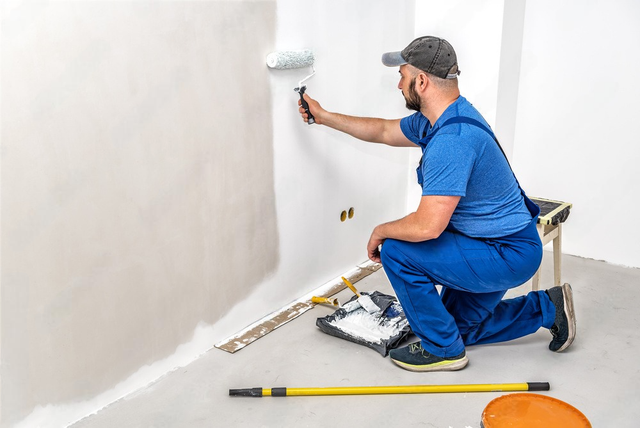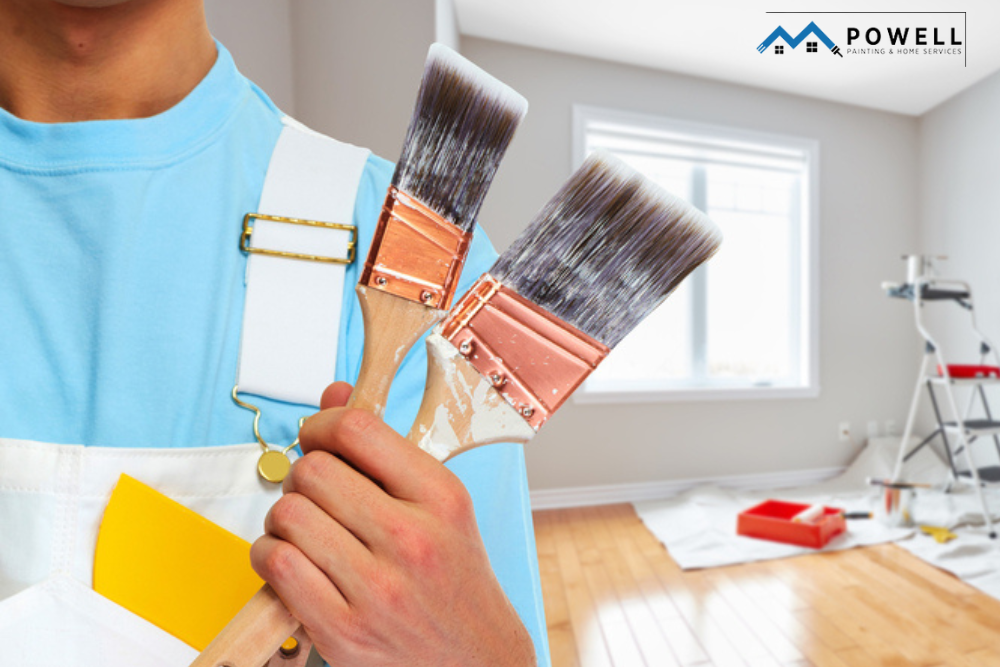Why Homeowners Choose corpus christi paint store for exceptional Painting Results
Exploring the Various Sorts Of Paint: A Guide for every single Job
Exploring the various kinds of paint is essential for accomplishing the desired end result in any kind of job. From water-based alternatives that use benefit to oil-based paints recognized for their resilience, each selection has its advantages. Specialized paints can add one-of-a-kind structures or surfaces, while environmentally friendly options provide to those seeking sustainability. Understanding these differences can substantially influence the success of a painting endeavor. What elements should one consider when making the ideal option?
Comprehending Paint Kinds: Oil-Based vs. water-based
Paint types can significantly influence a project's outcome, and comprehending the differences between water-based and oil-based paints is necessary for notified decision-making. Water-based paints, typically referred to as latex paints, are composed of water as the main solvent. They completely dry swiftly, emit fewer unstable natural substances (VOCs), and are very easy to clean up with soap and water. This makes them a popular choice for interior applications and atmospheres where air top quality is a worry.
On the other hand, oil-based paints utilize natural solvents, providing a long lasting, shiny finish suitable for surfaces revealed to deterioration, such as trim and closets. They take longer to completely dry, call for mineral spirits for cleanup, and have a stronger smell. corpus christi tx paint shop. Choosing between these two types relies on the specific needs of the project, thinking about factors such as wanted coating, application environment, and simplicity of upkeep. Each kind has distinctive advantages and limitations, leading the option process
The Finish Issues: Choosing In Between Matte, Satin, and Gloss
When picking a paint finish, the choice between matte and shiny alternatives substantially affects both looks and functionality. Matte finishes use a subtle, non-reflective look that can hide surface imperfections, while shiny coatings supply durability and ease of cleansing. Understanding the advantages and considerations of each can help in making an informed choice for any kind of painting project.
Matte End Up Benefits
Numerous homeowners question the qualities of numerous finishes, matte paint supplies distinctive advantages that make it a prominent option for both indoor and outside applications. One of the key advantages of matte finish is its capability to hide surface area flaws, creating a smoother look on wall surfaces. This high quality is specifically advantageous in older homes or rooms with unequal surfaces. In addition, matte paint soaks up light instead than reflecting it, which can improve the visual of an area by offering a much more muted and innovative look. Matte finishes are typically less complicated to touch up than glossier choices, as they can mix more effortlessly when used over existing paint. In general, matte paint is an outstanding choice for those seeking a fine-tuned and classy finish.
Glossy Complete Factors To Consider
A shiny surface can substantially alter the perception of an area, using a reflective and streamlined top quality that enhances both shade vibrancy and light within a space. This coating is often preferred for high-traffic locations and surfaces like cooking areas and bathrooms, where sturdiness and convenience of cleansing are essential. Nevertheless, its reflective nature can highlight flaws on wall surfaces, making appropriate surface prep work important. Shiny paints likewise have a tendency to reveal smudges and fingerprints a lot more conveniently, demanding normal upkeep. In addition, lighting plays a significant duty; in intense atmospheres, a shiny surface may develop glare, impacting the total aesthetic. Consequently, cautious consideration of the specific application and setting is important when picking a shiny finish for any type of project.
Specialized Paints: When to Use Textured or Chalk Paint
Specialized paints, such as textured and chalk paint, offer unique visual and functional benefits that can enhance numerous surfaces. Textured paint is excellent for developing depth and measurement on wall surfaces, concealing blemishes while including a three-dimensional feel. It is especially helpful in high-traffic locations where toughness and visual passion are necessary.

Both kinds of specialty paints can transform spaces, but picking the appropriate one relies on the wanted impact and surface area requirements. Distinctive paint might fit larger areas, while chalk paint can renew smaller sized things, showcasing creativity and personal style in any kind of task.
Outside Paints: Securing Your Surfaces From the Components
Outside paints are necessary for safeguarding surface areas versus various climate condition. Recognizing their weather resistance features, correct surface prep work demands, and effective application additional reading strategies can considerably improve durability and performance. This area will describe key factors to consider for picking and using outside paints efficiently.
Climate Resistance Includes
Weather resistance is an important attribute of outside paints, as it establishes exactly how well surface areas can stand up to the harsh aspects of nature. Top quality outdoor paints are developed to resist damages from UV rays, moisture, and temperature variations. UV resistance assurances shades remain lively over time, stopping fading and discoloration. Wetness resistance protects against mold and mildew and mildew, which can jeopardize the honesty of surfaces. Furthermore, paints with superb temperature resistance can acquire and increase without cracking, preserving their protective high qualities. When picking outdoor paints, it is important to consider these weather resistance features, as they add to the long life and durability of painted surfaces, ensuring they remain visually pleasing and useful despite exposure to the components.
Surface Area Prep Work Requirements
Proper surface preparation is an essential action in attaining the best results with outdoor paints. To assure perfect adhesion and resilience, surface areas should be completely cleaned up, eliminating grease, mildew, and dirt. This can be accomplished using a stress washing machine or a scrub brush with an appropriate cleansing solution. Once cleaned, surface areas must be evaluated for any kind of peeling or flaking paint, which have to be scuffed away to create a smooth foundation. Repairing any kind of splits or openings is also important, as these can allow moisture seepage. In addition, sanding rough locations advertises far better paint attachment. Lastly, applying a primer matched for outside usage can boost the paint's efficiency, ensuring a durable finish that withstands the components. Correct preparation is key to an effective outside paint project.
Application Strategies Tips
While using outdoor paints, it is crucial to use efficient techniques that assure surfaces are well-protected versus the elements. Initially, select the appropriate day for painting; reduced humidity and light temperatures boost bond and drying out. Prepping the surface area thoroughly-- cleaning, fining sand, and priming-- guarantees far better paint adhesion and longevity. Utilizing high-quality brushes or rollers can give a smoother finish, while spray painting may cover huge locations effectively. Applying paint in slim, also layers protects against drips and runs. It is advisable to adhere to maker guidelines relating to drying out times between layers. Lastly, verify correct air flow throughout application to help with drying out and decrease exposure to fumes. These methods considerably boost the longevity and performance of outdoor paint.
Eco-Friendly Options: Low-VOC and Zero-VOC Paints
As customers become increasingly aware of the ecological influence of their selections, low-VOC and zero-VOC paints have actually emerged as popular choices. These paints are formulated to include fewer unstable organic substances (VOCs), which are chemicals that can evaporate right into the air and add to air contamination and illness. Low-VOC paints commonly contain a minimal amount of VOCs, while zero-VOC paints have minimal levels, making them safer for both outdoor and indoor use.
The advantages of utilizing low-VOC and zero-VOC paints expand past environmental considerations; they likewise enhance interior air high quality, decreasing the risk of sensitive responses and respiratory concerns. Numerous makers now provide a variety of colors and coatings in eco-friendly options, making it simpler for consumers to find suitable items for their jobs. By choosing these paints, individuals can add to a much healthier atmosphere while still attaining the visual they want in their rooms.
Devices and Strategies for a Remarkable Application
Accomplishing a remarkable paint application requires the right devices and methods, which can considerably improve the outcome. Picking the proper brush or roller is vital; brushes work well for sides and elaborate locations, while rollers cover bigger surface areas efficiently. Utilizing high-quality materials guarantees better paint circulation and lessens streaks. For excellent outcomes, surface prep work is critical. This consists of cleaning, fining sand, and priming surfaces to promote bond.
Method also plays a considerable function. The "W" approach with a roller helps to uniformly disperse paint, while long, smooth strokes with a brush prevent visible lines. Operating in sections permits for better control and mixing. In addition, applying slim layers is more effective to thick layers, minimizing the threat of drips and irregular structures. Finally, preserving a damp side throughout application assists accomplish seamless modifications in between areas. By combining these devices directory and methods, one can achieve a polished and expert surface.
Tips for Preserving and Taking Care Of Your Painted Surfaces
Proper maintenance and treatment of painted surfaces can considerably expand their life expectancy and protect their appearance. Routine cleansing is necessary; utilizing a soft towel or sponge with mild read review soap and water can remove dirt and dust without damaging the paint. It is suggested to avoid rough cleaners or rubbing pads, as these can damage the surface. Additionally, applying a fresh layer of paint every couple of years can secure and invigorate the color versus wear.
For exterior surfaces, checking for indications of peeling or fading routinely is very important. Without delay addressing any issues stops additional damage. In areas vulnerable to moisture, such as shower rooms, using mold-resistant paint and making certain correct air flow can help maintain the stability of the paint. Using safety surfaces can shield versus UV rays and stains, guaranteeing that painted surfaces remain appealing and dynamic for years to come, inevitably boosting the overall visual of the room.

Often Asked Questions
Can I Mix Different Kind Of Paint With Each Other?
Mixing various kinds of paint is usually not recommended, as it can cause problems like bad bond, irregular texture, or unexpected chain reaction. It's finest to use compatible paints for excellent outcomes and longevity.

Exactly how Do I Appropriately Shop Leftover Paint?
To appropriately store remaining paint, seal the container snugly, tag it with the day and shade, and keep it in a great, dry location away from direct sunlight and severe temperature levels for suitable conservation.
What Is the very best Method to Take Care Of Extra Paint?
The finest method to take care of extra paint is to inspect neighborhood policies, as many locations have actually designated dangerous waste facilities. Alternatively, take into consideration donating usable paint to community organizations or schools for their projects.
Exactly How Can I Inform if Paint Is Still Excellent to Make Use Of?
To establish if paint is still good, analyze its uniformity, color, and scent. If it shows up apart, has an undesirable smell, or reveals considerable modifications in texture, it's most likely no longer usable.
Exist Age Restrictions for Investing In Paint Products?
In numerous regions, there are no details age limitations for purchasing paint items. Nevertheless, some stores might require consumers to be at the very least 18 years old, especially for items containing solvents or harmful products.
Paint types can significantly affect a task's result, and understanding the differences between oil-based and water-based paints is crucial for informed decision-making. Water-based paints, often referred to as latex paints, are made up of water as the primary solvent. In contrast, oil-based paints use organic solvents, giving a resilient, shiny surface ideal for surface areas subjected to use and tear, such as trim and cabinets. Specialty paints, such as distinctive and chalk paint, deal special aesthetic and practical benefits that can enhance numerous surfaces. In areas susceptible to moisture, such as shower rooms, making use of mold-resistant paint and ensuring appropriate ventilation can aid maintain the integrity of the paint.